42 healthy eating food labels
foodindustryexecutive.com › 2019 › 03Consumers Say They Want to Eat Healthy - Food Industry Executive Mar 04, 2019 · Ninety-three percent of consumers want to eat healthy at least some of the time, with 63% trying to eat healthy most or all of the time. Those findings are from L.E.K. Consulting’s 2018 food and beverage survey of almost 1,600 consumers. The survey asked about attitudes and preferences toward healthy, sustainable foods and beverages. Healthy Eating for Adults | MyPlate Fruits, vegetables, whole grains, protein foods, and fat-free or low-fat dairy or fortified soy alternatives are healthy choices. Include a variety of protein foods such as seafood, lean meats, poultry, beans, peas, lentils, nuts, and eggs. Enjoy fruits and vegetables No matter your age, fruits and veggies provide key nutrients and dietary fiber.
How to Read Food Labels | mySugr The best place to begin is to look at the ingredients on the food label. Look for heart-healthy ingredients — oats, whole-wheat flour, or soy. Healthy fats like peanut, olive, and canola oils, seeds, and nuts are all good for heart health, too. It's best to avoid foods that contain excessive amounts of saturated fats, sugars, salt, and ...
Healthy eating food labels
How to understand food labels | Eat For Health The Nutrition information panel on a food label offers the simplest and easiest way to choose foods with less saturated fat, salt (sodium), added sugars and kilojoules, and more fibre. It can also be used to decide how large one serve of a food group choice or discretionary food would be and whether it's worth the kilojoules. Understanding Food Nutrition Labels - American Heart Association Learn what to look for on the label. 1 - Start with the serving information at the top. This will tell you the size of a single serving and the total number of servings per container (package). 2 - Next, check total calories per serving and container. The Ultimate Guide to Food Labels | EatingWell Low Sodium: The food contains 140 milligrams of sodium or less per serving. Lightly Salted: The item contains 50% less sodium per serving than the standard version of that product. Less Sodium: The item contains at least 25% less sodium per serving compared to the standard version of that product. This is also true for the terms "reduced sodium ...
Healthy eating food labels. Reading Labels On Food Canada Food Guide Teaching Resources | TPT Topics covered are:Healthy Eating Goals (Canada's Food Guide), Nutrients, Food Labels (Canadian Food Labelling), Nutrition Facts Table, Food in Media, Media Influences,Healthy Eating Influences,Eating Cues,Food Choices in Different Places,Healthy Eating and Active Living,Some of the same materials from Ontario Health Bundle Grades 4-6 have been ... Looking at labels - British Nutrition Foundation Health claims on food labels are not allowed to state that the food can prevent, treat or cure any disease or medical condition, neither are they allowed to ... Food Labels | CDC - Centers for Disease Control and Prevention If you eat the whole thing, you are eating 8 times the amount of calories, carbs, fat, etc., shown on the label. Total Carbohydrate shows you types of carbs in the food, including sugar and fiber. Choose foods with more fiber, vitamins, and minerals. Choose foods with lower calories, saturated fat, sodium, and added sugars. Avoid trans fat. Healthy Eating | National Institute on Aging Choose a variety of nutrient-dense foods across and within all the food groups: vegetables, fruits, grains, protein foods, dairy products, and oils. Vitamins and Minerals for Older Adults Older adults may have different vitamin and mineral needs than younger adults. Find recommended amounts and information on calcium, sodium, vitamin D, and more.
4 Easy Steps to Read Food Labels for Healthy Eating 2. Prioritize ingredient lists that are short. The 365 peanut butter contains palm oil and cane sugar as well. In this case, the Kirkland peanut butter would be the clear healthier choice. You probably don't need to go any further than step #2, but let's check the last to steps to practice how to read a food label. 3. Figuring Out Food Labels (for Kids) - Nemours KidsHealth A food with 5% or less of a nutrient is low in that nutrient. A food with 10%-19% of a nutrient is a good source of that nutrient. A food with 20% or more of a nutrient is high in that nutrient. The information on food labels is based on an average adult diet of 2,000 calories per day. Printable Materials and Handouts | Nutrition.gov What's New with the Nutrition Facts Label HHS, Food and Drug Administration The U.S. Food and Drug Administration (FDA) has updated the Nutrition Facts label on packaged foods and beverages with a new design, making it easier to make informed choices towards healthy eating habits. The New and Improved Nutrition Facts Label - Key Changes Understanding Food Labels | The Nutrition Source The FDA has approved 12 health claims on food labels such as the relationship between calcium and osteoporosis; sodium and hypertension; fiber-containing grains, fruits and vegetables and cancer; and folic acid and neural tube defects. However, just because a food contains a specific nutrient that is associated with a decreased risk of disease does not necessarily make the food healthy as a whole.
› wellbeing › healthyAre You Eating For A Healthy Heart? | Poster - Heart Foundation By following a heart-healthy way of eating, you will be ensuring that you get all the nutrients you need to support your health. The Healthy Heart Visual Food Guide. The Healthy Heart Visual Food Guide is based on a cardio-protective eating pattern, so it focuses on looking after your heart and overall health. It's a simple tool for you to use ... Standards FSANZ develops food standards for Australia and New Zealand. The Code is enforced by state and territory departments, agencies and local councils in Australia; the Ministry for Primary Industries in New Zealand and the Australian Department of Agriculture and Water Resources for food imported into Australia. Food labels | Office on Women's Health Food labels The labels on packages are important tools you can use to find out what is in the food you eat. Make healthier food choices by learning more about the Nutrition Facts label and the ingredient list. The Food and Drug Administration (FDA) didn't require the Nutrition Facts label until 1991. The FDA has updated the Nutrition Facts label. Use of the Term Healthy on Food Labeling | FDA The existing definition has limits for total fat, saturated fat, cholesterol and sodium and to qualify, foods must also provide at least 10% of the Daily Value (DV) for one or more of the...
Food labels - NHS eat some beans, pulses, fish, eggs, meat and other protein - aim for 2 portions of fish every week, 1 of which should be oily, such as salmon or mackerel choose unsaturated oils and spreads, and eat them in small amounts drink plenty of fluids - the government recommends 6 to 8 cups or glasses a day
The 30 Healthiest Foods to Eat Every Day: A Healthy Food List - Real Simple A vitamin C gold mine—a 1/2 cup of cooked broccoli satisfies 80 percent of the U.S. Food and Drug Administration's recommended daily dose. 12 It's also a key source of vitamin K, which helps blood clot properly. 13. Try this: Toss with olive oil, garlic, and crushed red pepper. Roast at 375 degrees F until tender.
Reading Food Labels - Guide for Stroke Recovery We can use food labels to compare foods and select foods that fit into a healthy lifestyle. You may wish to look for foods with LESS: Sodium, fat, saturated fat and trans fat, cholesterol. You may wish to look for foods with MORE: Fibre Sometimes it can be hard to know what is a healthy choice.
The FDA's New Plan to Label Some Foods as 'Healthy' Is a Bad Idea The "healthy" food label will likely have a similar impact: Failing to improve our health in any meaningful way, while also having some unintended—and decidedly unhealthy—consequences.
How To Read Food and Beverage Labels | National Institute on Aging Here are some examples and what they mean: Light. Light products are processed to reduce either calories or fat. This may sound healthy, but some "light" products... Low-fat, low-calorie, low-carb. These foods have a legal limit to how many calories, grams of fat, or carbohydrates... Multigrain. ...
Food Labels | Nutrition.gov Food Labels Food labels can help you make healthy choices when buying food in grocery stores or restaurants. Labeling Organic Products USDA, Agricultural Marketing Service, National Organic Program Learn about organic foods, requirements, and how they are labeled. Calories on the Menu HHS, Food and Drug Administration
Reading Food Labels | ADA - American Diabetes Association Put food labels to work. The Nutrition Facts labels on foods are really the key to making the best choices. We'll cover the basics so that these labels make shopping easier for you. You've heard it all. From carb-free to low-carb, to whole and empty carbs, it's hard to know what it all means. Blood sugar highs and lows aren't always ...
Light | Healthy Recipes, Nutrition Tips & Guides to ... Studies show that eating foods like fatty salmon, leafy greens, berries, caffeinated drinks, and walnuts can help to slow your cognitive decline and even improve test scores. The following recipes make these brain-beneficial ingredients the star of the show in everything from smoothies to baked goods.
How to read food labels - safefood How do I know if a food is low, medium or high in fat, saturated fat, sugar and salt? ; Fat, 3g or less, Between 3g and 17.5g, Over 17.5g ; Saturated fat, 1.5g or ...
Do food labels promote healthy eating in Europe? - EIT Food Healthy eating has a fundamental role to play in reducing these figures, and food labelling is key in helping consumers to make healthier choices. However, despite the fact that suppliers follow the same regulations, there are many challenges in how food labels promote healthy eating across the EU.
The FDA Wants to Update the Definition for "Healthy" Claims on Food Labels Nuts and seeds, fatty fish such as salmon, certain oils and water are currently categories of food that would not be able to be labeled as healthy with this proposed definition. But the FDA notes that these products can be part of a healthy dietary pattern and therefore can still qualify to be labeled as "healthy."
Reading Food Labels (for Parents) - Nemours KidsHealth The food label gives total carbohydrates along with fiber, total sugars, and added sugars. Dietary Fiber Dietary fiber itself has no calories and is a necessary part of a healthy diet. Fiber can help you feel full and promotes bowel regularity. High-fiber diets can help lower cholesterol levels and may help reduce the risk of colon cancer. Sugars
› en › healthy-livingCarbohydrates | American Heart Association Apr 16, 2018 · Get more complex carbohydrates and healthy nutrients by eating more fruits and vegetables. Focus on whole-grain rice, breads and cereals, and don’t forget the legumes — beans, lentils and dried peas.
› en › healthy-livingWhole Grains, Refined Grains, and Dietary Fiber | American ... Nov 01, 2021 · Breads, cereals and pastas are comfort foods for some and enjoyed by many – despite the fuss over carbs and gluten. Whole grains are one of the features of the American Heart Association’s dietary recommendations for heart health.
How to Read Food Labels Without Being Tricked - Healthline This label says very little about whether a product is healthy. For example, organic sugar is still sugar. No added sugar. Some products are naturally high in sugar. The fact that they don't...
Food labelling - get into the habit of checking the label - BHF Most products have nutritional information on the label. Some products also have colour coding on the front, which tells you at a glance if the food has high ( ...
Healthy Eating for Kids With Diabetes (for Kids) - Humana - Louisiana How Food Labels Can Help. Food labels are easy to read, and they list a food's ingredients, nutritional information, and calories. So anyone concerned about eating healthy can learn a lot from them. For people with diabetes, food labels also may provide information they need to know to keep their blood sugar on track.
food-guide.canada.ca › en › healthy-eatingEat protein foods - Canada's Food Guide May 03, 2022 · If you eat only plant-based foods, choose a variety of healthy foods from Canada's food guide. Include foods and beverages fortified with vitamin B12 because vitamin B12 is only found naturally in animal-based foods. Choosing and preparing healthy protein foods. There are many different types of protein foods to choose. Make healthier choices.
Understanding Food Nutrition Labels | American Heart Association Make sure you get enough of the nutrients your body needs, such as: calcium, choline, dietary fiber, iron, magnesium, potassium, and vitamins A, C, D and E.* 5 - Understand % Daily Value. The % Daily Value (DV) tells you the percentage of each nutrient in a single serving, in terms of the daily recommended amount.
Food guidelines and food labels - NHS Eat well Food guidelines and food labels Guidelines and advice about food and food labels, including the Eatwell Guide. Food labels Water, drinks and your health The Eatwell Guide Red meat and the risk of bowel cancer
How to Understand and Use the Nutrition Facts Label - FDA Feb 25, 2022 ... It's important to realize that all the nutrient amounts shown on the label, including the number of calories, refer to the size of the serving.
How to Read Food Labels for Healthy Eating - Immuno Labs Now, let's look at the actual nutrition facts: Serving size: 25.5 g (one pouch of gummies) Calories: 80 (in big letters) Total Fat: 0g Saturated Fat: 0g Trans Fat: 0g Sodium: 20 mg Total Carbohydrates: 19g (8% of your daily value) Dietary Fiber: 0g Total Sugars: 11g (18% of the daily value) Includes 9g Added Sugars Protein 1g Vitamin A 230mcg
10 tips for understanding food labels - Heart Matters magazine - BHF 1. Read the ingredients list · 2. Check out the nutrition information · 3. You don't need to calorie count · 4. Look at the type of fat, and how much · 5. Beware of ...
The Ultimate Guide to Food Labels | EatingWell Low Sodium: The food contains 140 milligrams of sodium or less per serving. Lightly Salted: The item contains 50% less sodium per serving than the standard version of that product. Less Sodium: The item contains at least 25% less sodium per serving compared to the standard version of that product. This is also true for the terms "reduced sodium ...
Understanding Food Nutrition Labels - American Heart Association Learn what to look for on the label. 1 - Start with the serving information at the top. This will tell you the size of a single serving and the total number of servings per container (package). 2 - Next, check total calories per serving and container.
How to understand food labels | Eat For Health The Nutrition information panel on a food label offers the simplest and easiest way to choose foods with less saturated fat, salt (sodium), added sugars and kilojoules, and more fibre. It can also be used to decide how large one serve of a food group choice or discretionary food would be and whether it's worth the kilojoules.
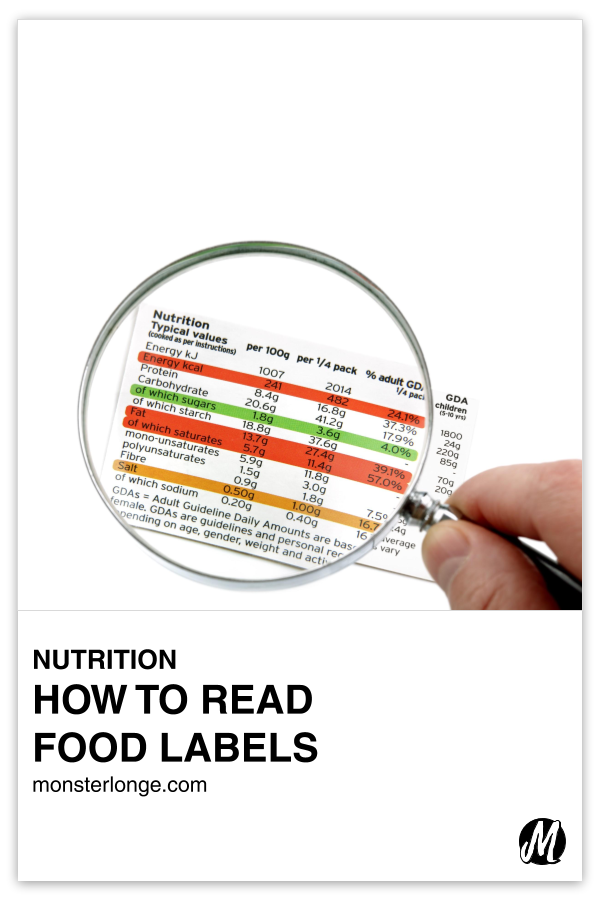
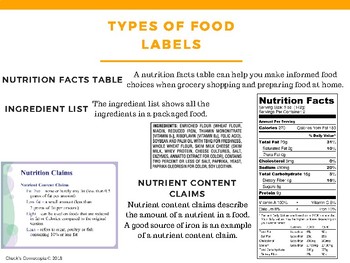
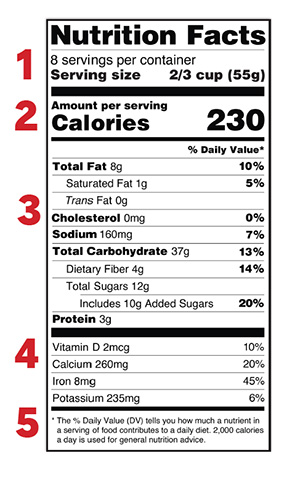
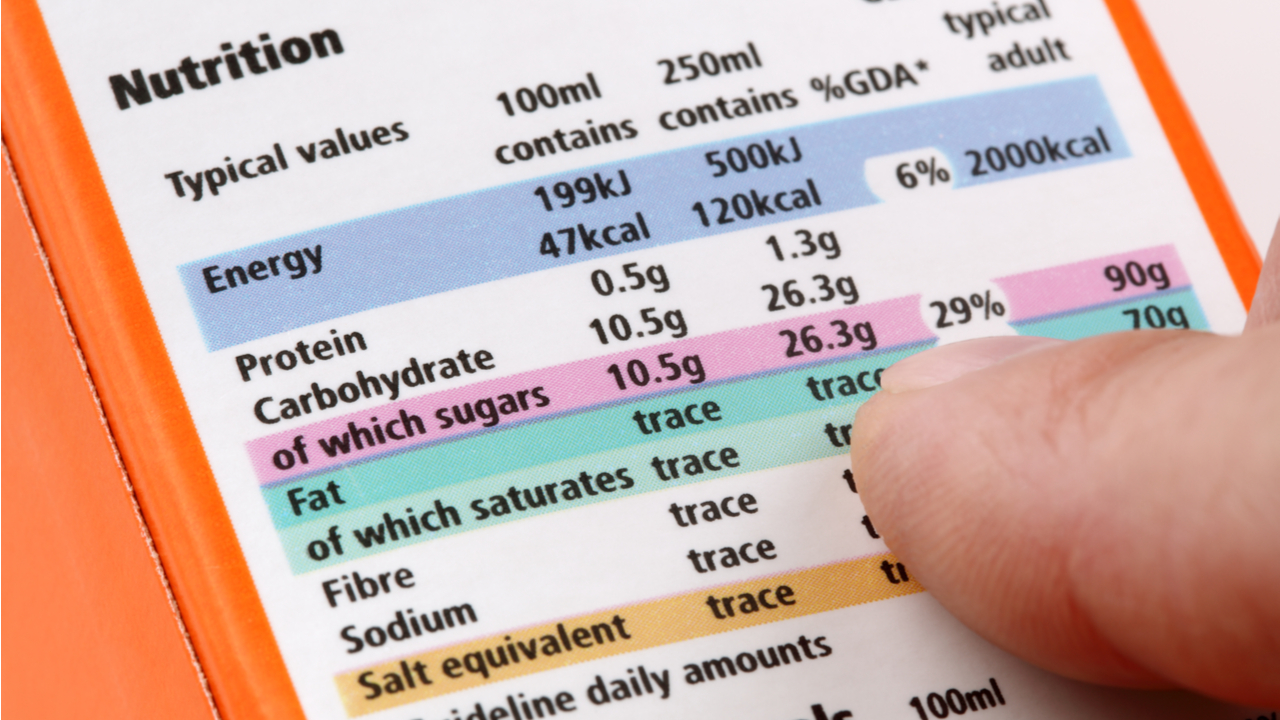


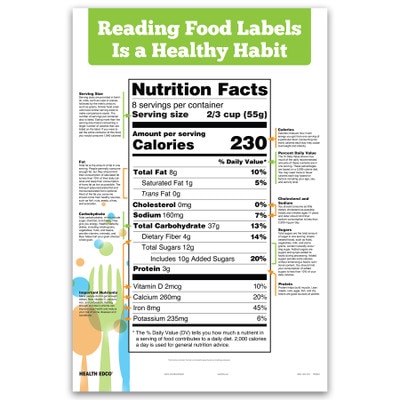

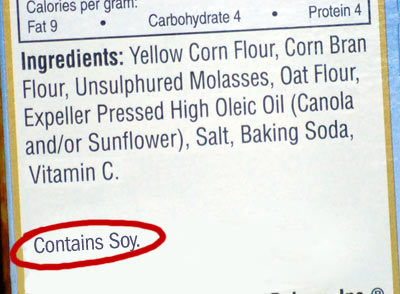




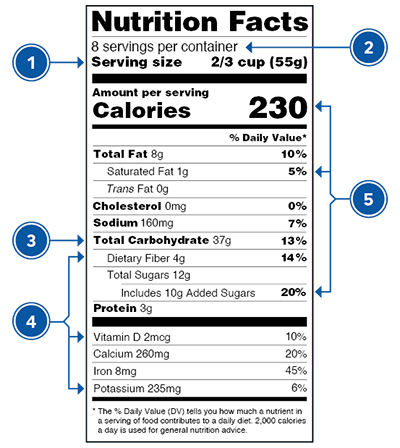
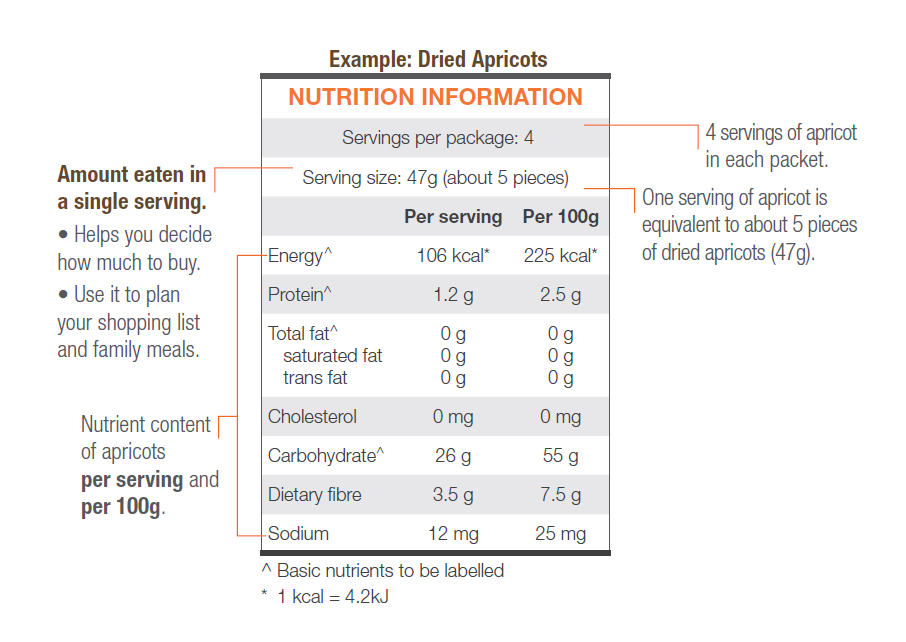




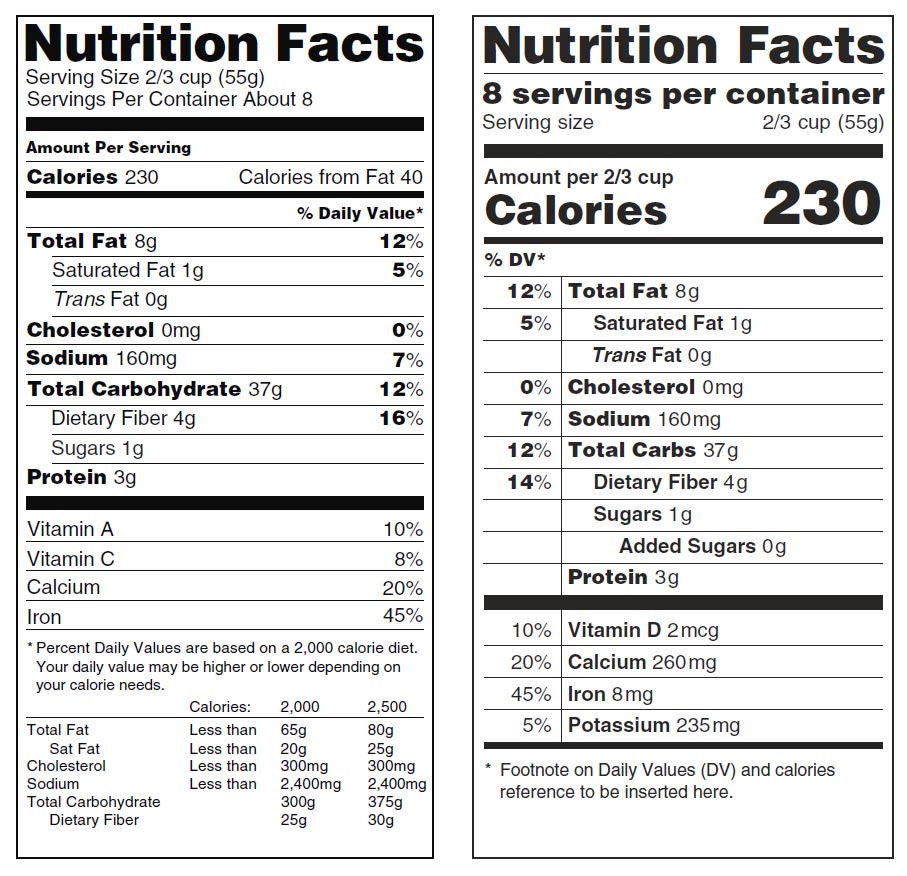



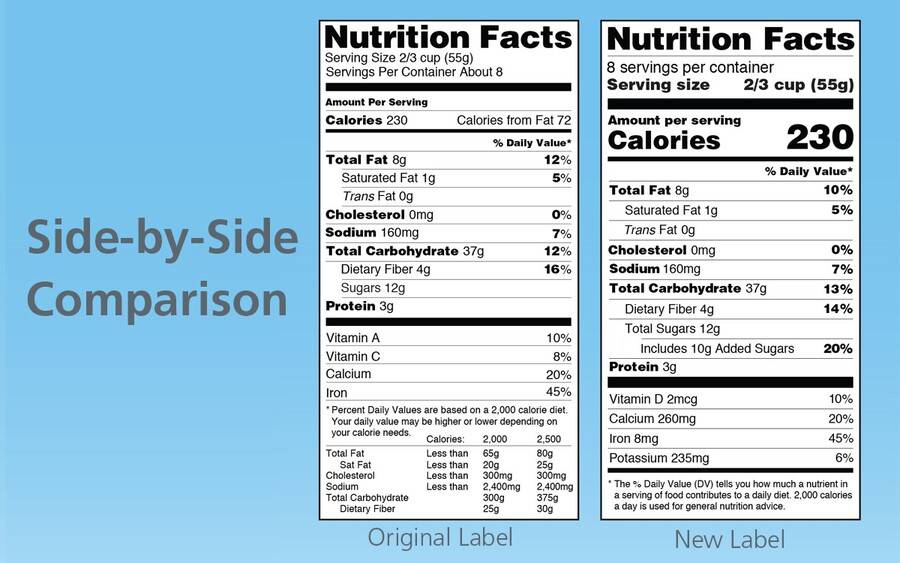
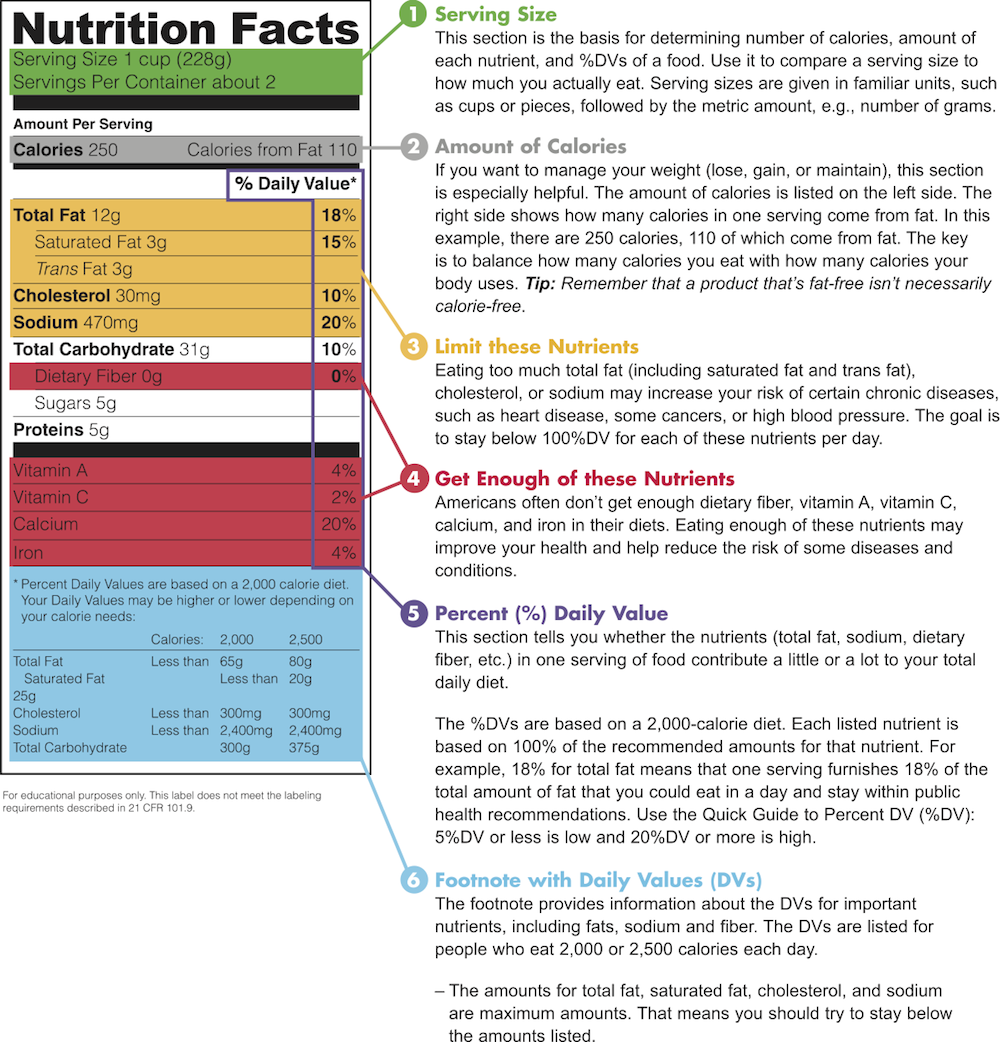
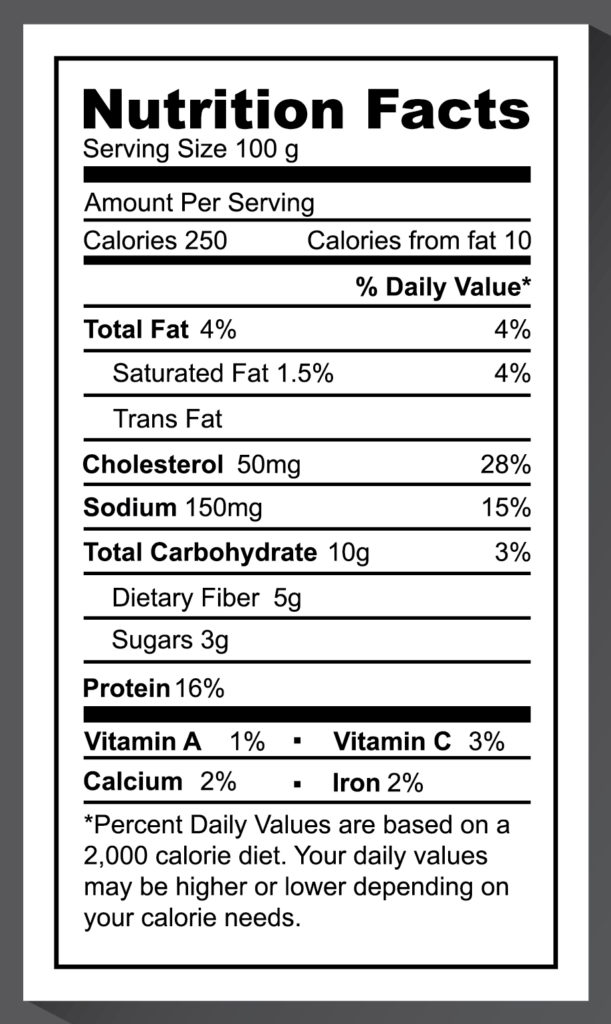
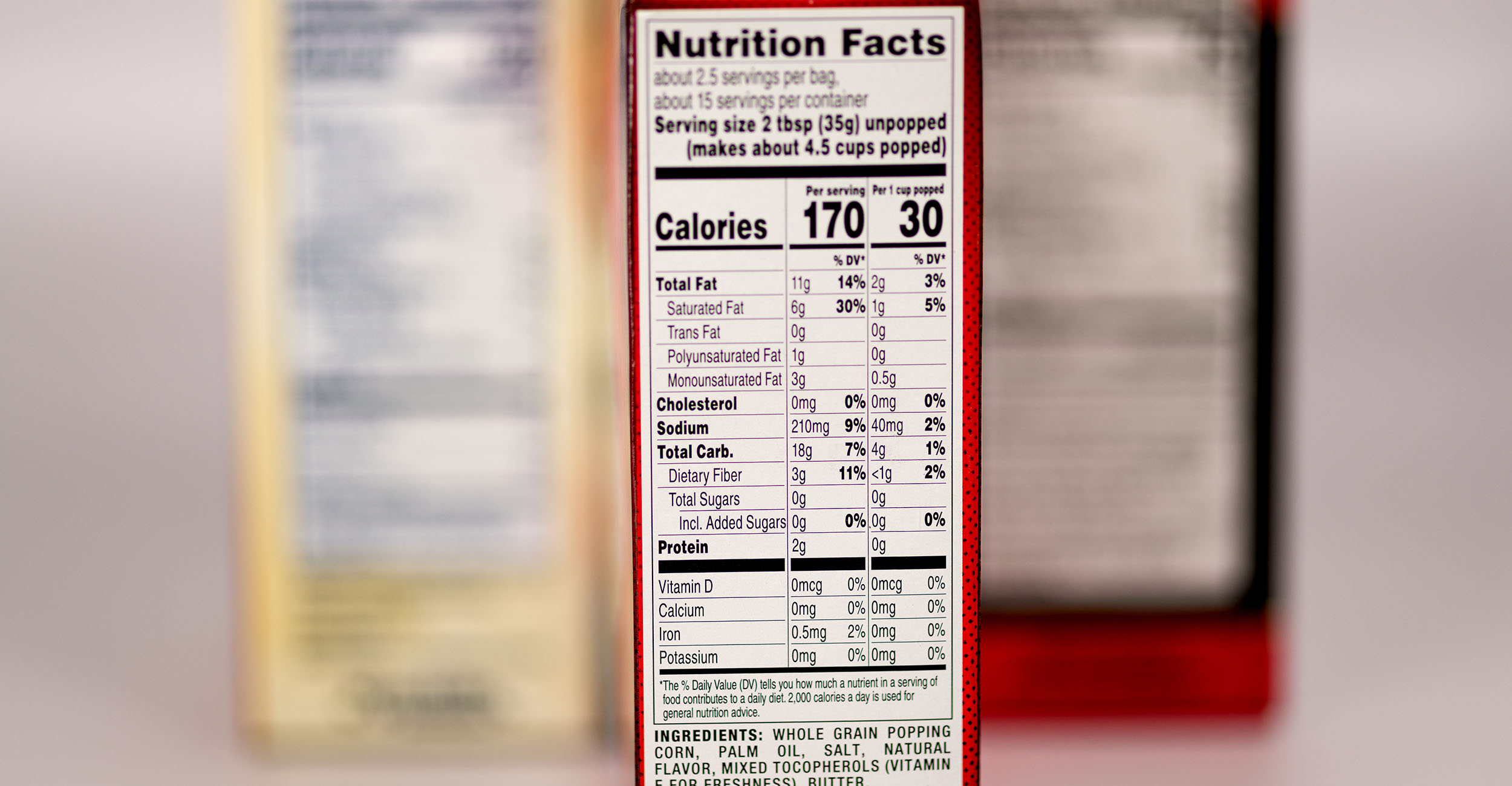
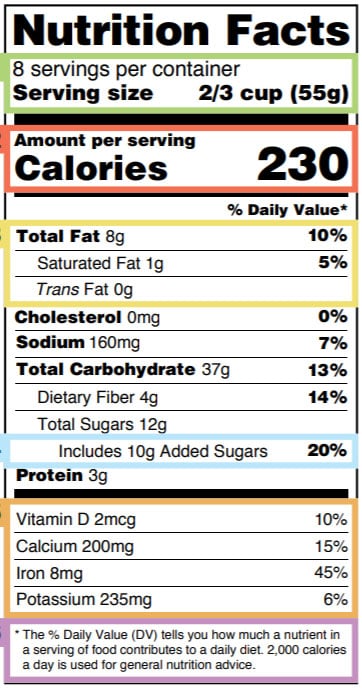
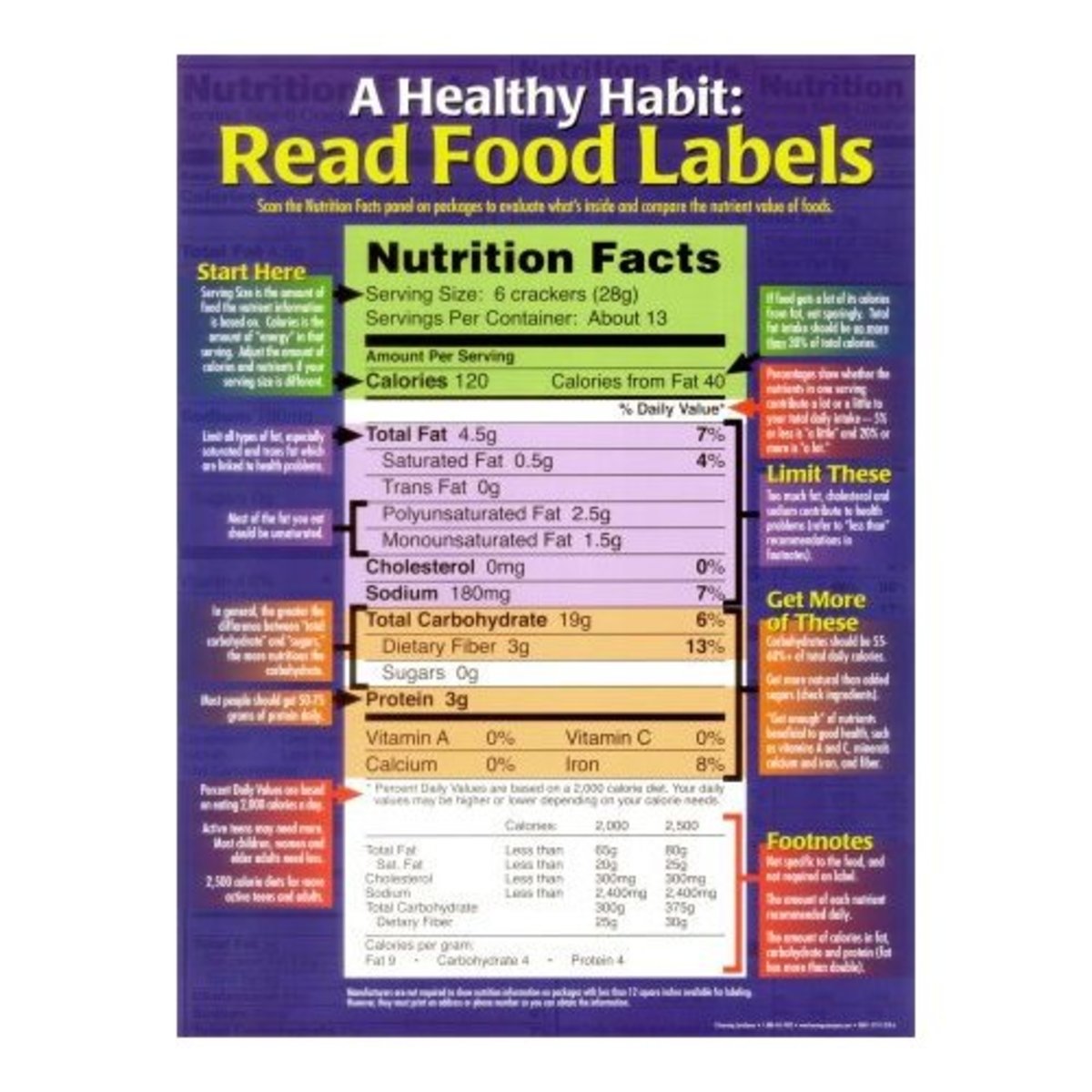

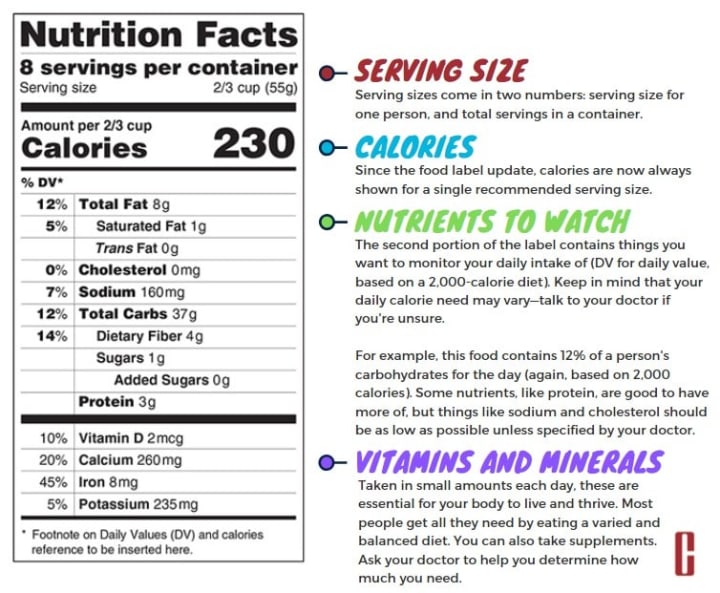

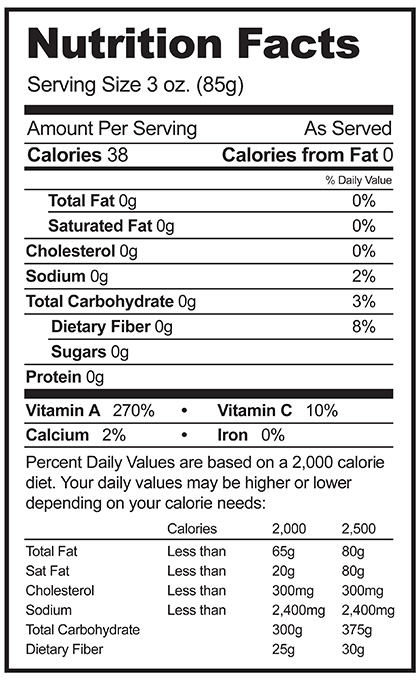
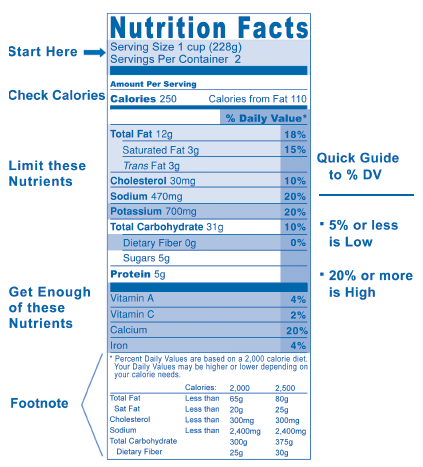


Post a Comment for "42 healthy eating food labels"